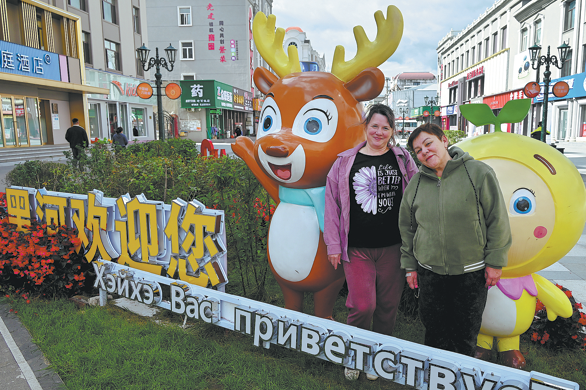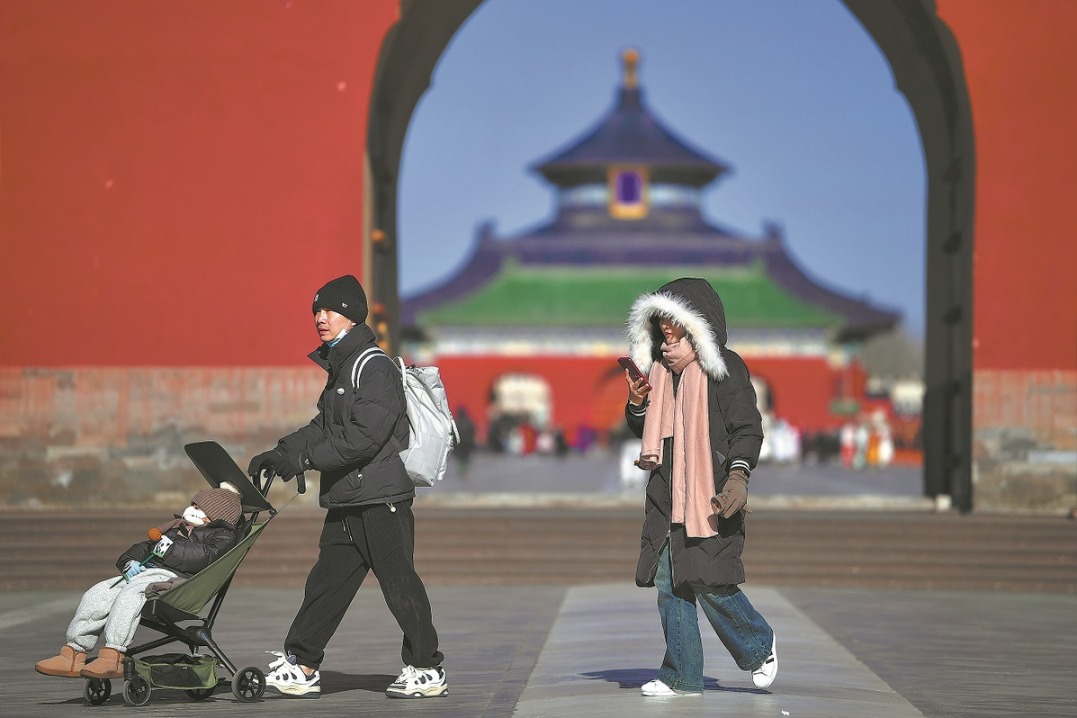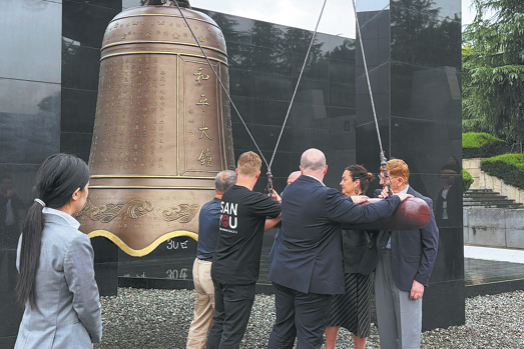Exhibition shines light on Chinese workers' contribution in building US railway system
China Daily | Updated: 2017-09-12 08:03
 |
| A photo taken by Alfred A. Hart shows a part of the US' transcontinental railway. [Photo provided to China Daily] |
A photo exhibition shines light on Chinese workers' contribution in building the US railway system. China Daily reports.
Li Ju, an amateur photographer from Beijing, has traveled extensively in the United States since 2006. He became interested in that country's railway system in 2010 when he was in search of a historical route that would allow him to travel the US from the Atlantic coast to the Pacific coast. "At first, I was about to seek data of the Pony Express, a message-delivering route in the mid-1800s. In a library, I found that many photos taken by Alfred A. Hart have recorded the construction process of the US' first transcontinental railroad. I was surprised to see some Chinese workers in long gowns appear in the pictures," Li, 58, says.
Then his eagerness to track the steps of the Chinese workers prompted his first road trip along a US railroad.
"Hart left about 370 railway photos. I wanted to see if I could find the places in the pictures and shoot them in the present. I only found 16 places during my first trip. But later I got nearly 200 such places."
 |
| A photo of the same place is taken by Chinese photographer Li Ju. Both are on display at the Overseas Chinese History Museum of China in Beijing. [Photo provided to China Daily] |
Li's photos are now on show at the Overseas Chinese History Museum of China in Beijing with other historical pictures of such Chinese rail workers. The exhibition, titled Echoes Across Time and Space-Commemorating the Chinese Laborers on the American Railroad Construction 150 Years Ago, will run through Oct 8.
Some Chinese-American people traveled all the way from the US to attend the opening ceremony of the exhibition on Sept 5.
Among them, Margaret Yee, 78, is the organizer of the Chinese Railroad Worker Descendants Association that was founded in May. Her grandfather, Huang Huayou, once worked as a chef for the construction team.
It was Yee's mother who told her the anecdotes of her grandfather.
After the transcontinental railroad was completed in Utah in 1869, Huang moved to Sacramento and sought a livelihood there by working on a fruit farm.
 |
| Margaret Yee, organizer, Chinese Railroad Worker Descendants Association. [Photo provided to China Daily] |
"One day, he dug out a pot of gold from under a tree, but he handed it over to the farm owner without any hesitation," Yee says. "Though living far away from his homeland, he still exemplified the virtues of loyalty and honesty that come from traditional Chinese culture."
Yee described the background of the largest photo at the exhibition. In the picture, hundreds of Chinese workers' descendants are seen standing together at Promontory Summit, Utah, a historical site that witnessed the completion of the first transcontinental railway.
On May 10, 1869, the western section of the US project built by the Central Pacific Railroad Company that hired Chinese workers and the eastern section built by the Union Pacific Railroad Company were connected together after a "golden spike" was driven into the lumber.
Yee says that every May 10, descendants of the Chinese workers pay their respects to their ancestors at the site.
"Without their sacrifice, we couldn't lead a cozy life today. I feel proud of them for their perseverance and ingenuity," she says, adding that she wants more people to know about the greatness of the Chinese laborers who once toiled to build the vital railway and helped connect that country.
 |
| A photo taken by Alfred A. Hart. [Photo provided to China Daily] |
Apart from the offspring of the Chinese workers who endeavor to honor their ancestors, other Chinese-Americans have also worked to spread the knowledge of the effort made by the workers.
On May 9, 2014, the Chinese workers who helped build the first transcontinental railway in the US were inducted into the Labor Hall of Honor. It's a success of Chinese-Americans who are continuously tracing their roots and seek recognition from mainstream society in that country.
Monica Yeung Arima, a Chinese immigrant who has lived in the US for more than 40 years, is a volunteer for the Chinese Railway Workers Project at Stanford University.
The project carries out one of the most authoritative studies on the Chinese rail workers in the US and is looking to create an online digital archive available to all, along with books, conferences and public events.
It is a long-term project to increase public awareness about the contribution of Chinese-Americans, Arima says.
"That's why I want to volunteer in the project and donate for it," she says.
The engineering graduate from Berkeley University also works for another project called Stanford Program on International and Cross-Cultural Education, which helps to develop curricular material on topics related to the Chinese rail workers in the US.
 |
| A photo taken by Chinese photographer Li Ju is on display at the Overseas Chinese History Museum of China in Beijing. [Photo provided to China Daily] |
She says the stories of Chinese workers haven't been told in detail in American textbooks and it is also important for young Chinese-Americans to know their identity.
"I hope one day such an exhibition can travel to a mainstream museum in the US," she says of the ongoing exhibition in Beijing.
Huang Jikai, director of the Beijing museum, says the Chinese workers' commitment to the development of the US should be treasured and respected by both countries.
In a picture at the exhibition, dwarfed by a mountain behind him, a diminutive Chinese man wearing a straw hat is seen carrying two buckets suspended from a shoulder pole.
Gu Lei, a 43-year-old Beijing native who saw the exhibition, says: "When I look at these Chinese faces in the pictures and think about how many of them must have died in the harsh environment during the construction, I feel their sacrifice should be remembered forever."
If you go
9 am-5 pm, daily through Oct 8, Mondays closed. Beixinqiao Santiao, Dongcheng district, Beijing. 010-6407-3039, 010-6407-0943.
- AR exhibition of Japanese horror manga artist Junji Ito underway in Chengdu
- Designers showcase work at Shanghai Design Week exhibition
- Thangka art exhibition held in Beijing
- Exhibition in Gozo marks 45th anniversary of China-Malta ties
- BRICS leaders launch BRICS Cultural Festival and Photo Exhibition in Xiamen
























